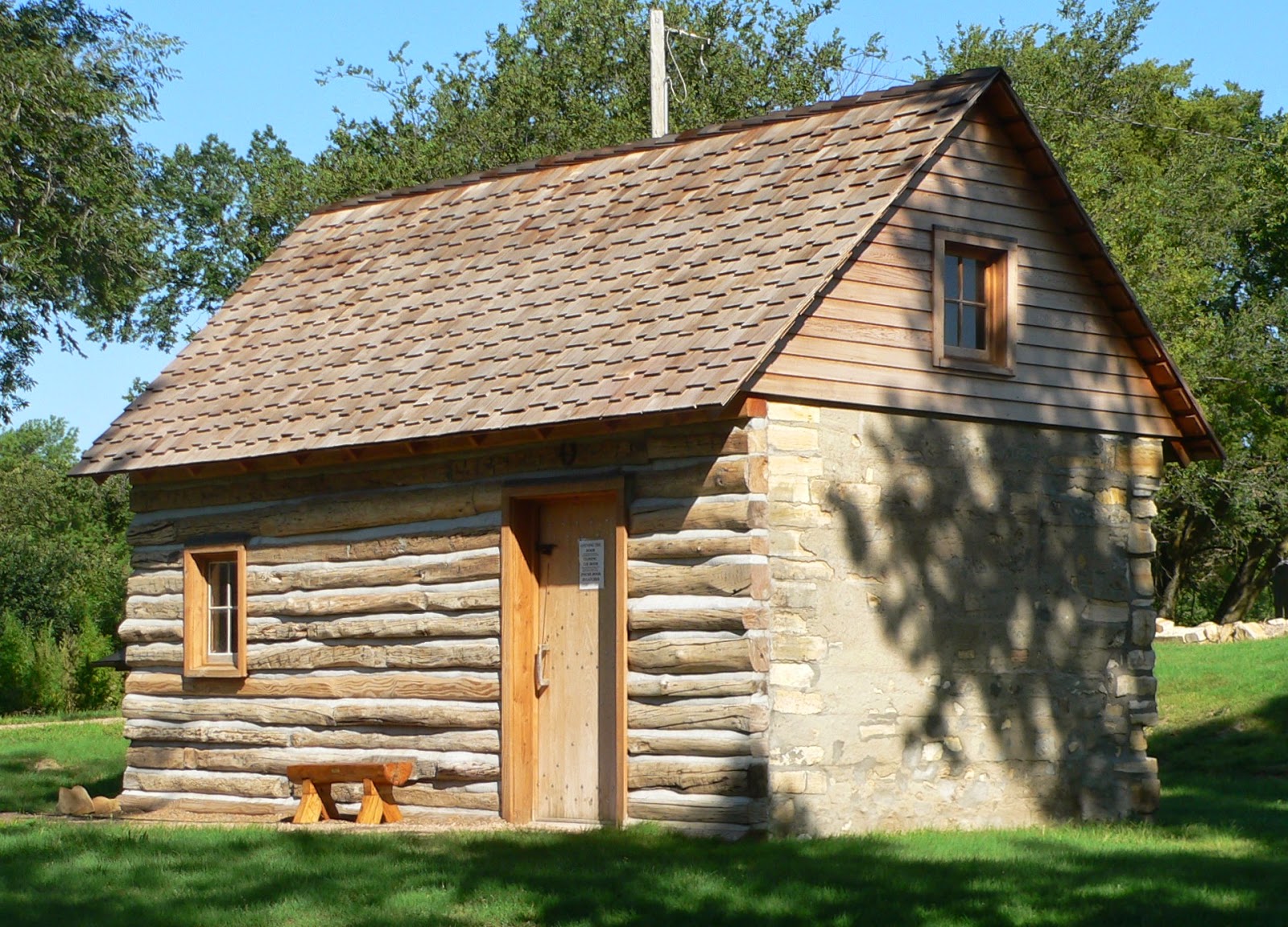 |
| Photo credit: Ammodramus |
The recent death of Russell Bomhoff, a well-known name to the aviation world and especially in Wichita, KS, brought to the attention of his family his charitable contributions to certain historical projects, among them the saving of the cabin of Dr. Brewster Higley VI. Higley built the cabin in 1875, but it had fallen into extreme disrepair until a group organized to rescue this important Kansas historical site. Why are Dr. Higley and his cabin important? Because Higley was the author of the poem that we know as lyrics for the Kansas State Song, "Home on the Range."
 |
| Dr. Brewster Higley VI |
Dr. Higley came to Smith County, KS in 1871 to claim a Homestead, first living in a dugout before building his cabin alongside West Beaver Creek. He was so charmed by his beautiful claim that he wrote a 6-verse poem that he titled "My Western Home," describing the land and its plants and animals. In 1874 his poem was published in the Smith County Pioneer, the Kansas Farmer in Topeka, and the Kirwin Chief. These publications leave no room for doubt concerning the authorship of the poem used as lyrics for "Home on the Range."
Among Dr. Higley's friends was Daniel E. Kelley, a Civil War veteran who came to Smith County in 1872. Daniel and his wife Lulu, together with the Harlan brothers (Lulu's siblings), formed the Harlan Orchestra, which frequently performed in the area between 1878 through 1885. Daniel set Higley's poem to music, and "My Western Home" became a popular dance tune.
 |
| Photo credit: How do you turn this on |
Enter David W. Guion, born Dec. 15, 1892, in Ballinger, TX, son of Judge John I. Guion (1854-1920), a former President of the Texas A&M Board of Directors. David grew up on his father's ranch where he admired the cowboy life, as well as being introduced to African-American music when he attended church with a family servant. As a boy he was sent to San Antonio by train for piano lessons, and the influence of both the music of the cowboys and the Negro church services came to play a large role in Guion's fame as a composer. Unfortunately, Guion was not always careful to credit the sources of his musical adaptations. Innocently or otherwise, he claimed to have first heard "My Western Home" from cowboys, and in 1925 when the song was published as sheet music in San Antonio, TX, Guion revised the song in 1930 for a Broadway show, retitled "Home on the Range. FDR claimed "Home on the Range" as a favorite! Both the sheet music and Guion's Broadway show tune claimed that no composer or author was known.
The credit due Higley and Kelley might have been lost but for the greed of William and Mary Goodwin who, in 1934 filed a $500,000 lawsuit claiming copyright infringement on their own "My Arizona Home," copyrighted in 1905. The search was on to determine the rightful ownship of the song. The Museum Publishers Protective Association discovered that a Texas University professor named John Lomax who collected folk songs had published a collection in 1910. The professor had recorded a soloonkeeper singing "Home on the Range" in 1908, and that man had once driven cattle on the Chisholm Trail to Kansas. A Colorado mining song was similar, and early Dodge City cowboys had also sung a version. The final proof linking the song to Higley and Kelley came from an 86-year-old resident of Smith County named Clarence B. 'Cal' Harlan who had sung the song 60 years earlier with the Harlan Orchestra.
The effort to designate a state song began with Kansas Governor Arthur Capper in 1915, but it took over three decades before the Kansas Legislature finally adopted "Home on the Range" as the official state song in 1947. The Kansas State Song is recognized internationally, and Higley and Kelley finally have received the credit they are due.
The Home on the Range Cabin was listed on the National Register of Historic Places in 1973, and the cabin site including 240 acres of range and cultivated land is owned by Peoples Heartland Foundation. With the help of volunteers and generous donors, the cabin was restored in 2013 to its 1870s appearance.
 |
| Story Board Cartoon now housed in the Baylor University David W. Guion Collection |
3 comments:
Isn't it wonderful how songs get around? I am glad someone tracked down the history. I had no idea that Home on the Range was so "recent". Am sharing this on Facebook
Thanks Blog Fodder! This is a great blog to share and I'm glad you are helping more people find it.
My friend GS shared a story with me about Marshal Alan Bailey, a real-life Western Kansas cowboy complete with a huge handle-bar moustache, big hat, and pistol strapped to his leg. It seems he hosts a radio program on public radio called "Western Swing and Other Things," as well as MC-ing bluegrass festivals. (My friend, a bluegrass fan and entertainer, met him through bluegrass music.) It seems that Bailey was involved in the historical preservation of the Home on the Range cabin in Smith County too. He is also a cowboy poet, and his talents resulted in his extensive traveling, including international trips. According to my friend, Marshal Alan Bailey says that the No. 1, most famous cowboy song, known all over the world, is always "Home on the Range." Thanks for sharing this story GS.
Post a Comment